Original WWII 1940 Pearl Harbor Territory of Hawaii Fathom Depths Navigation Map


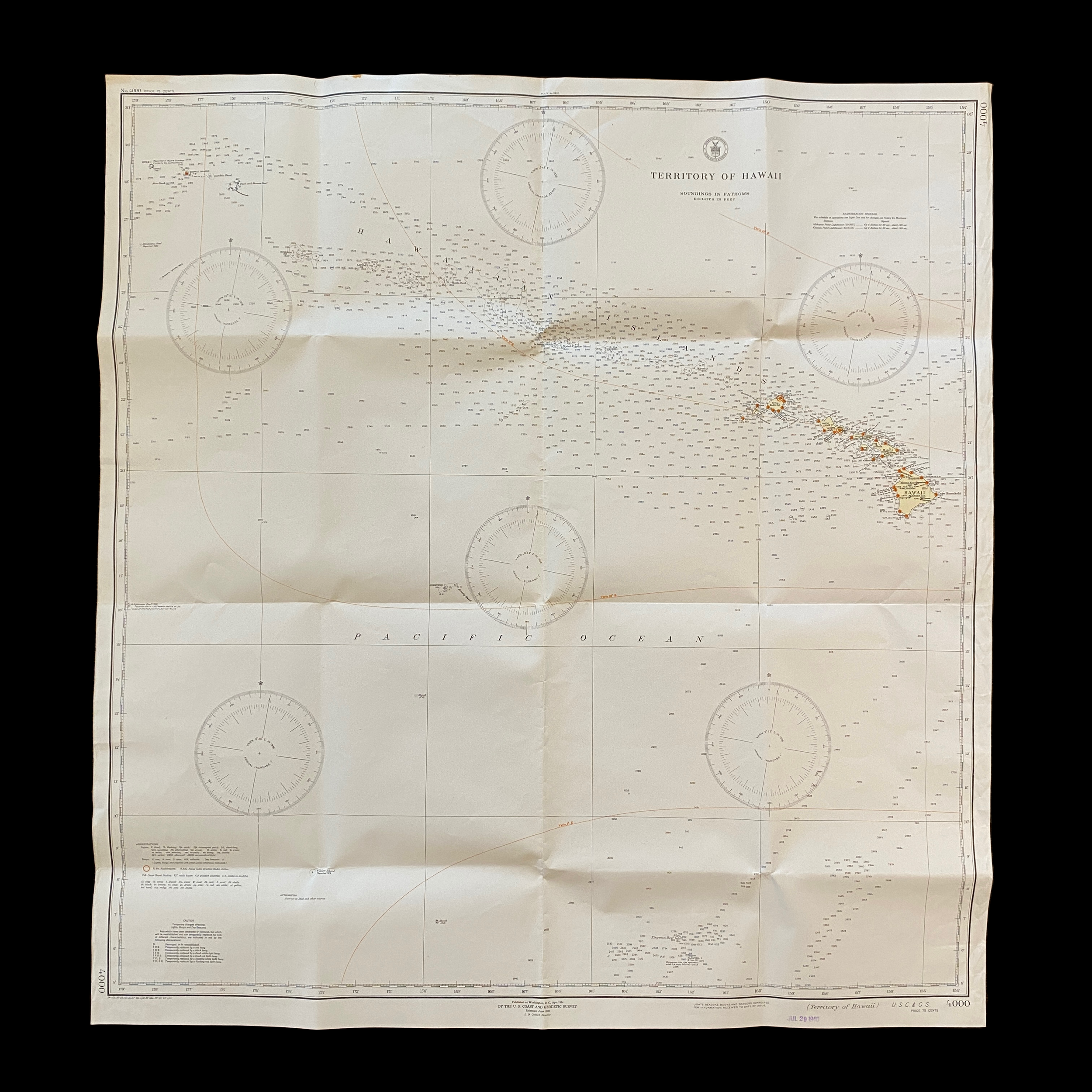
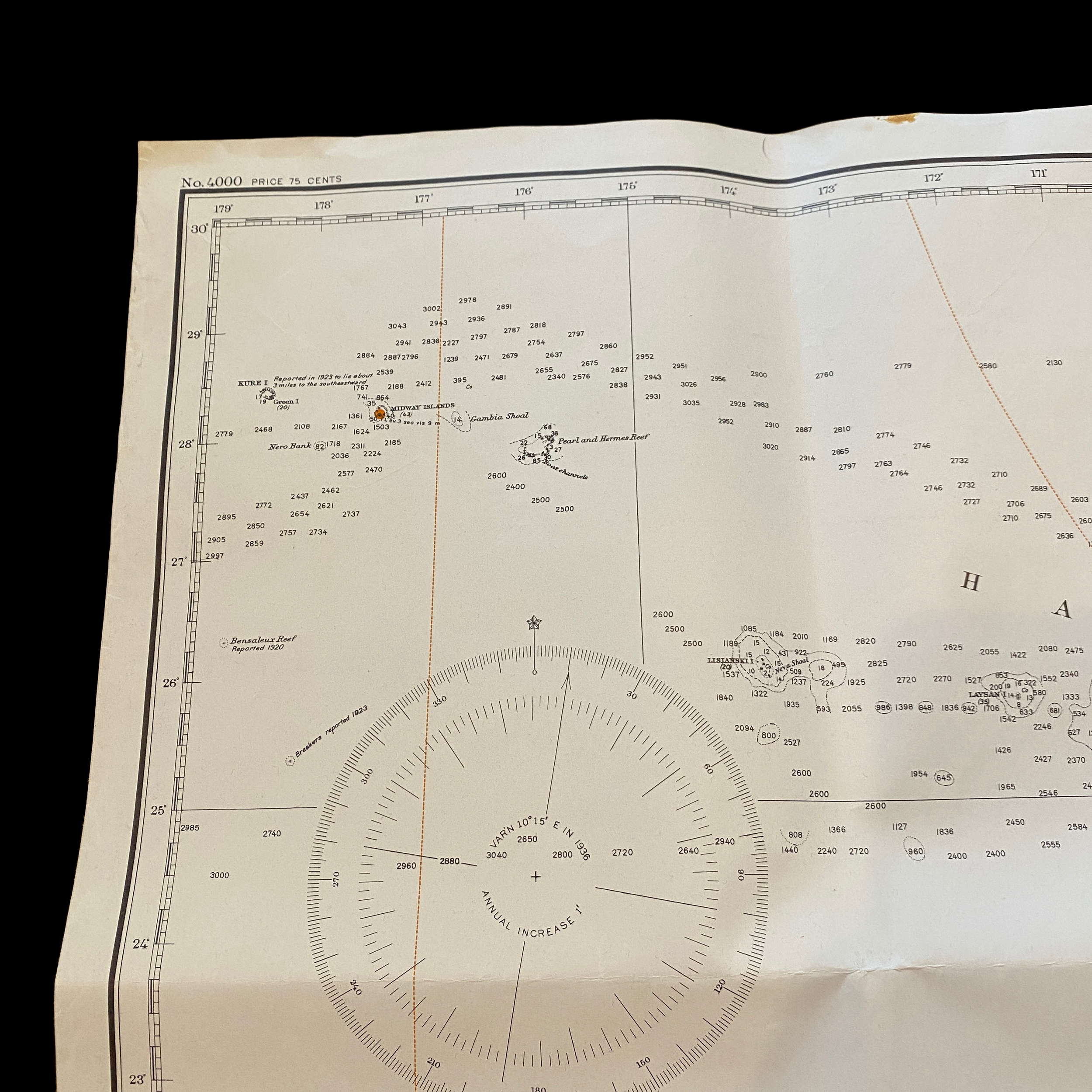

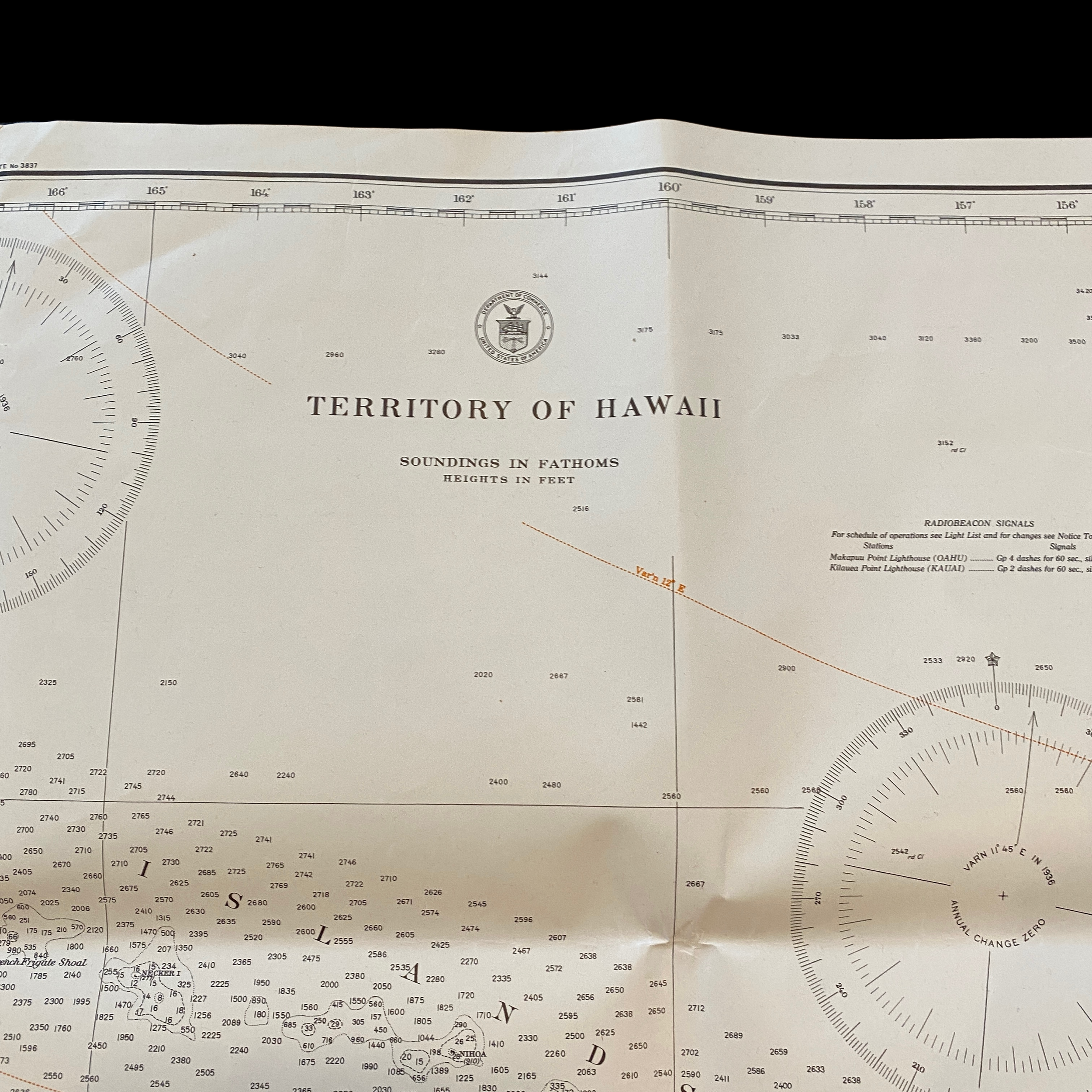

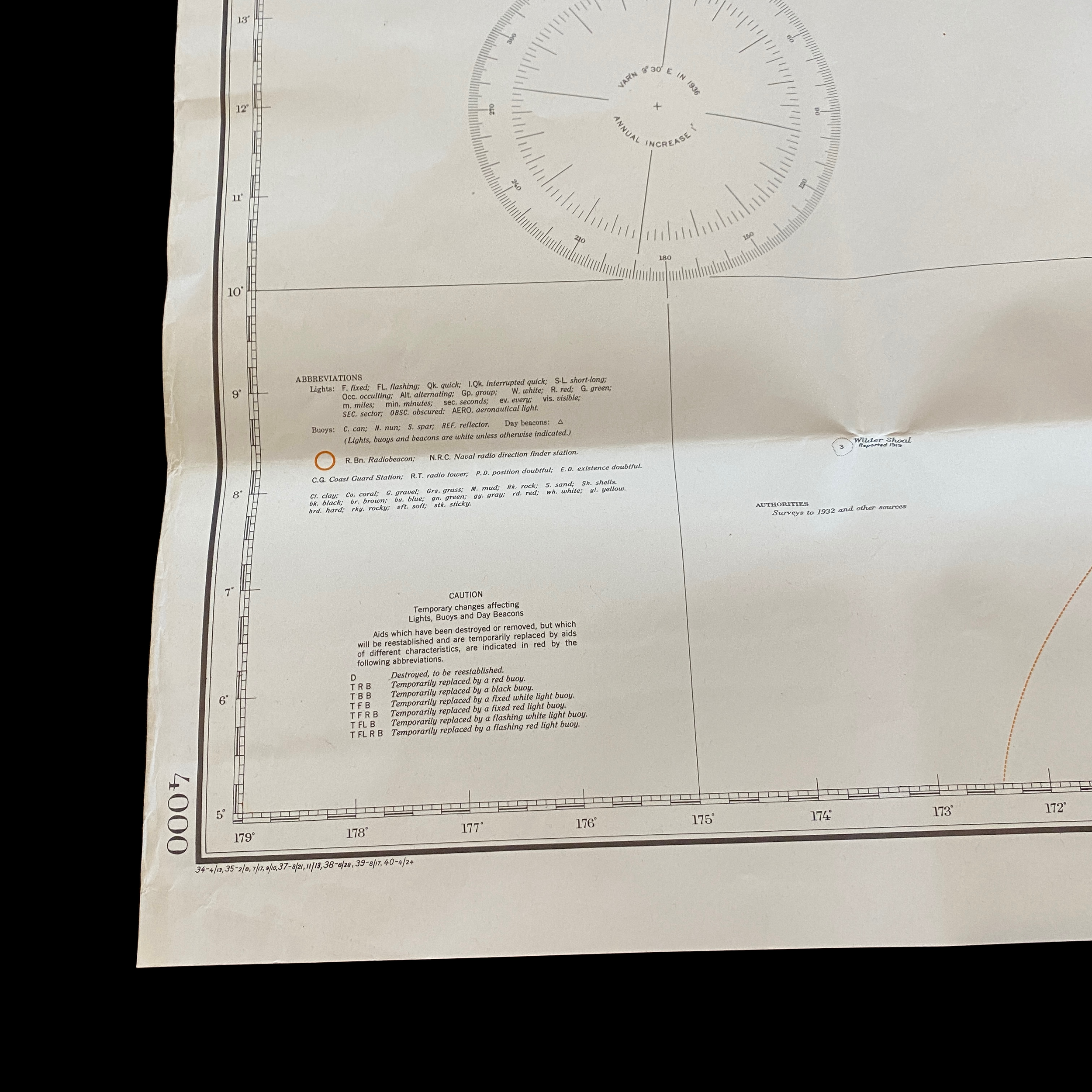
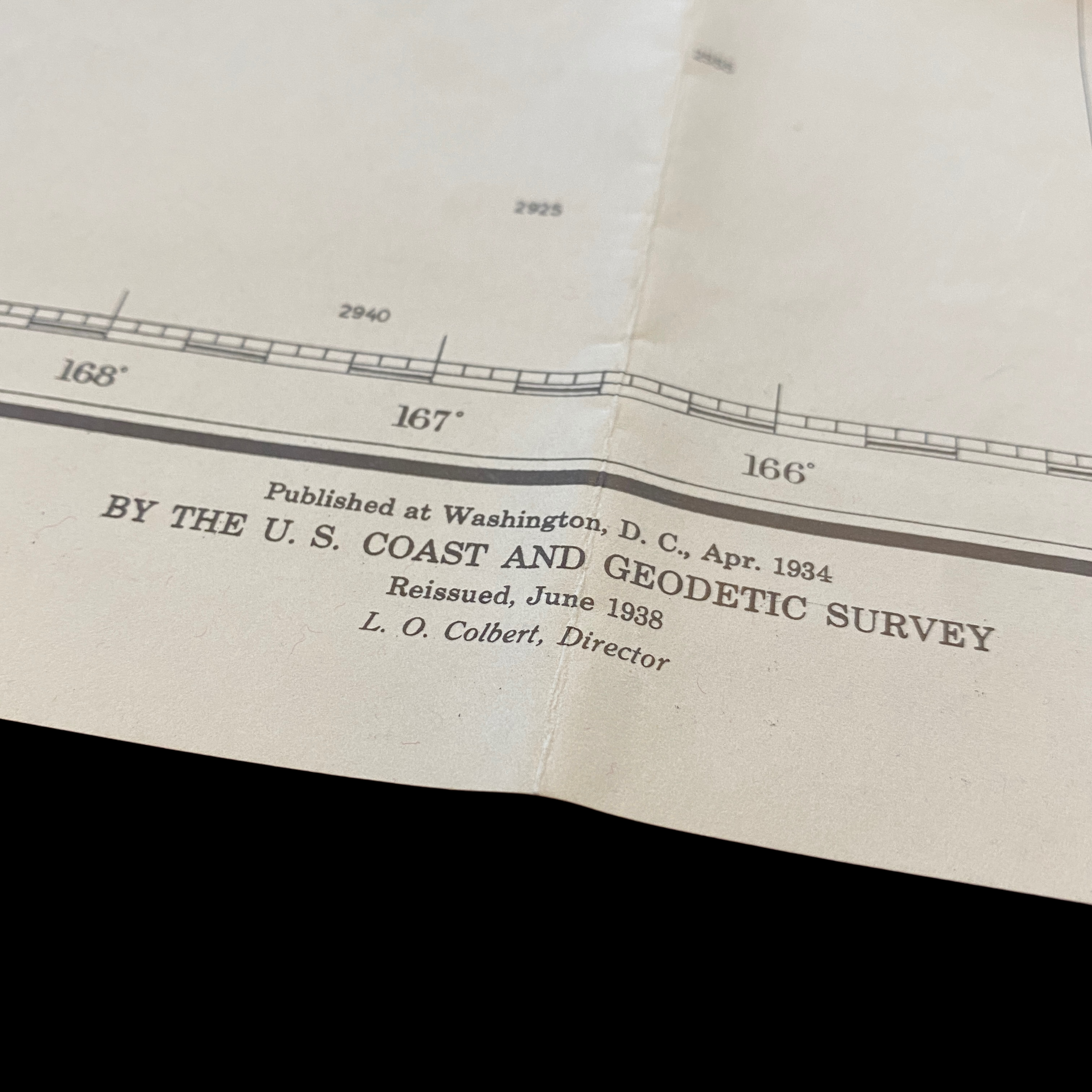



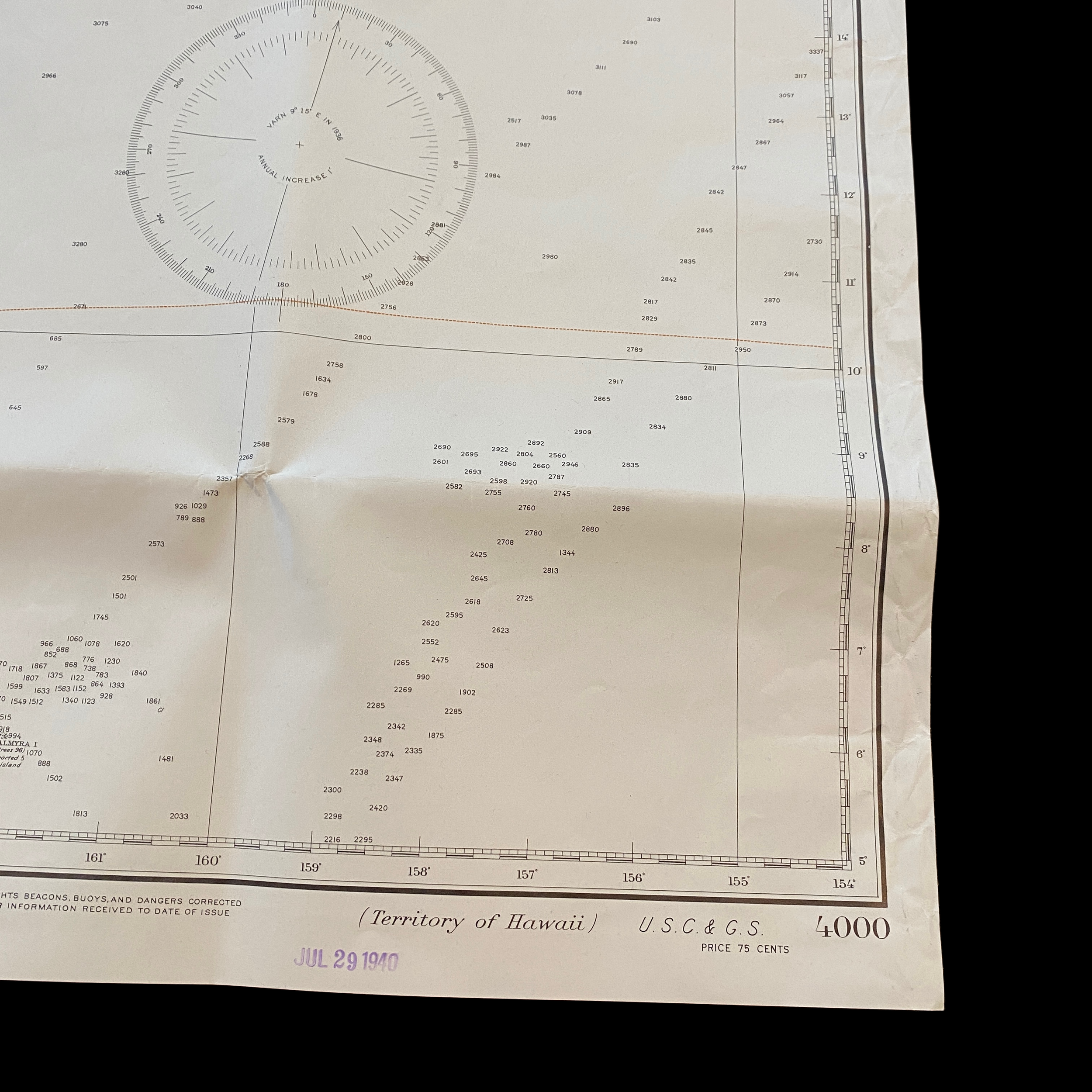
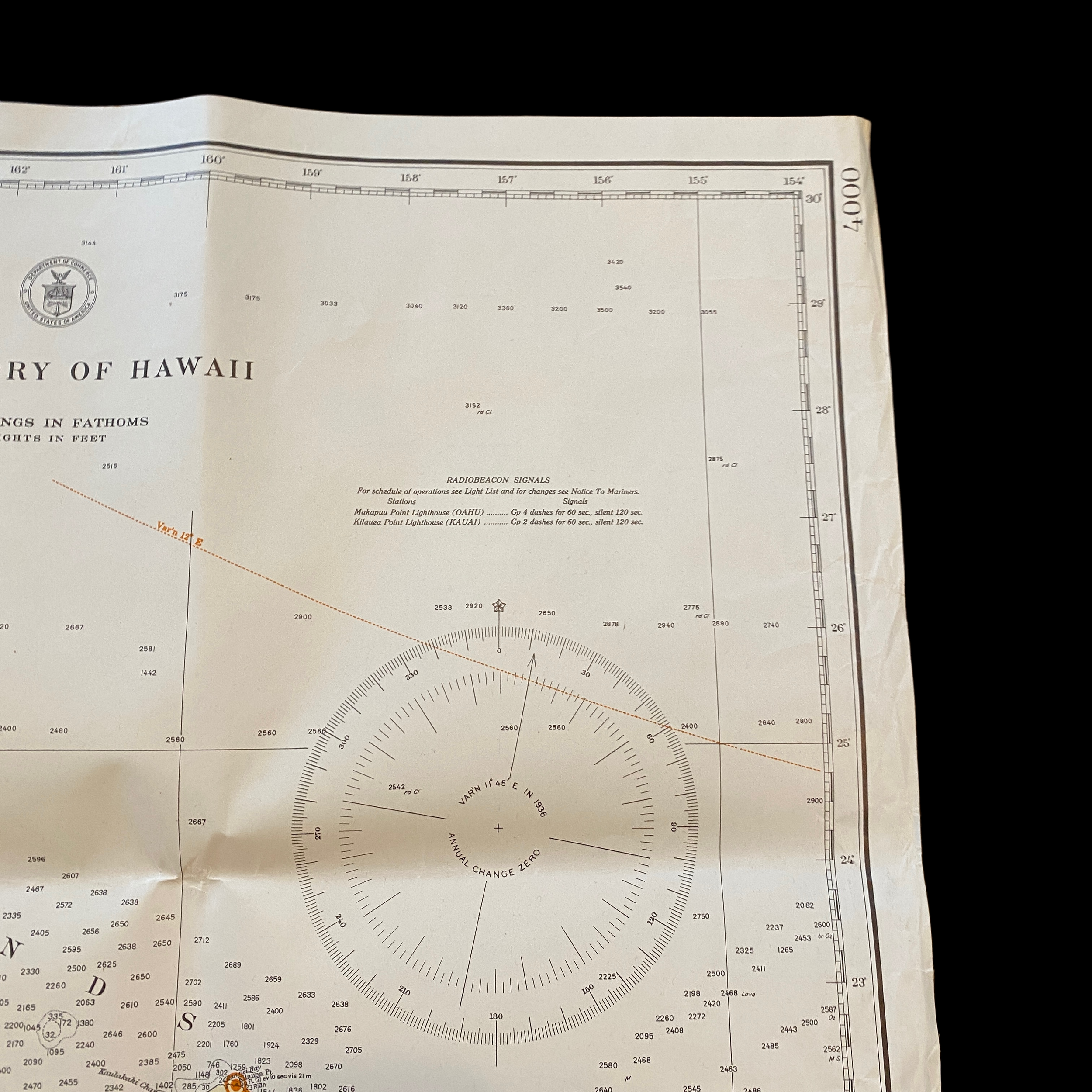
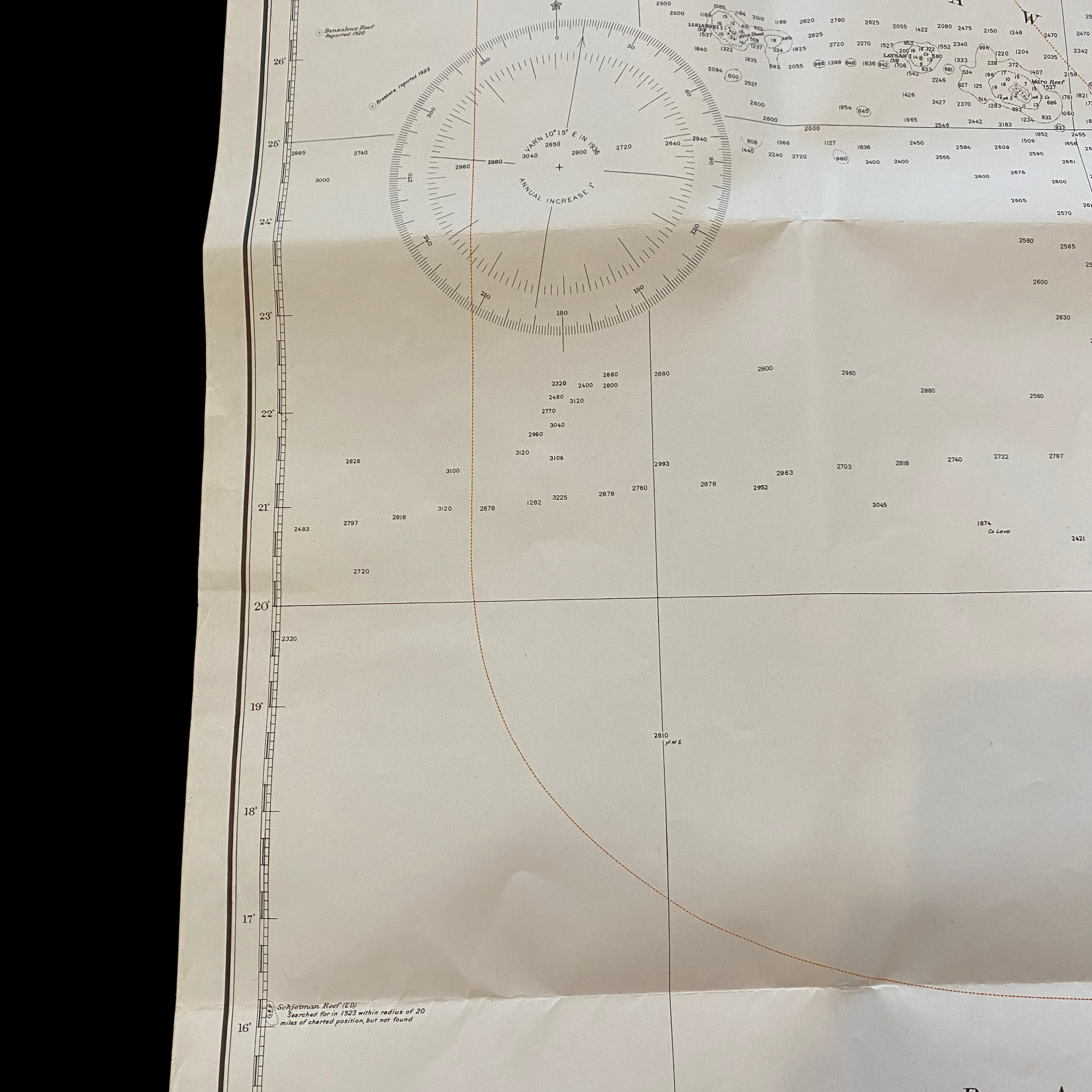
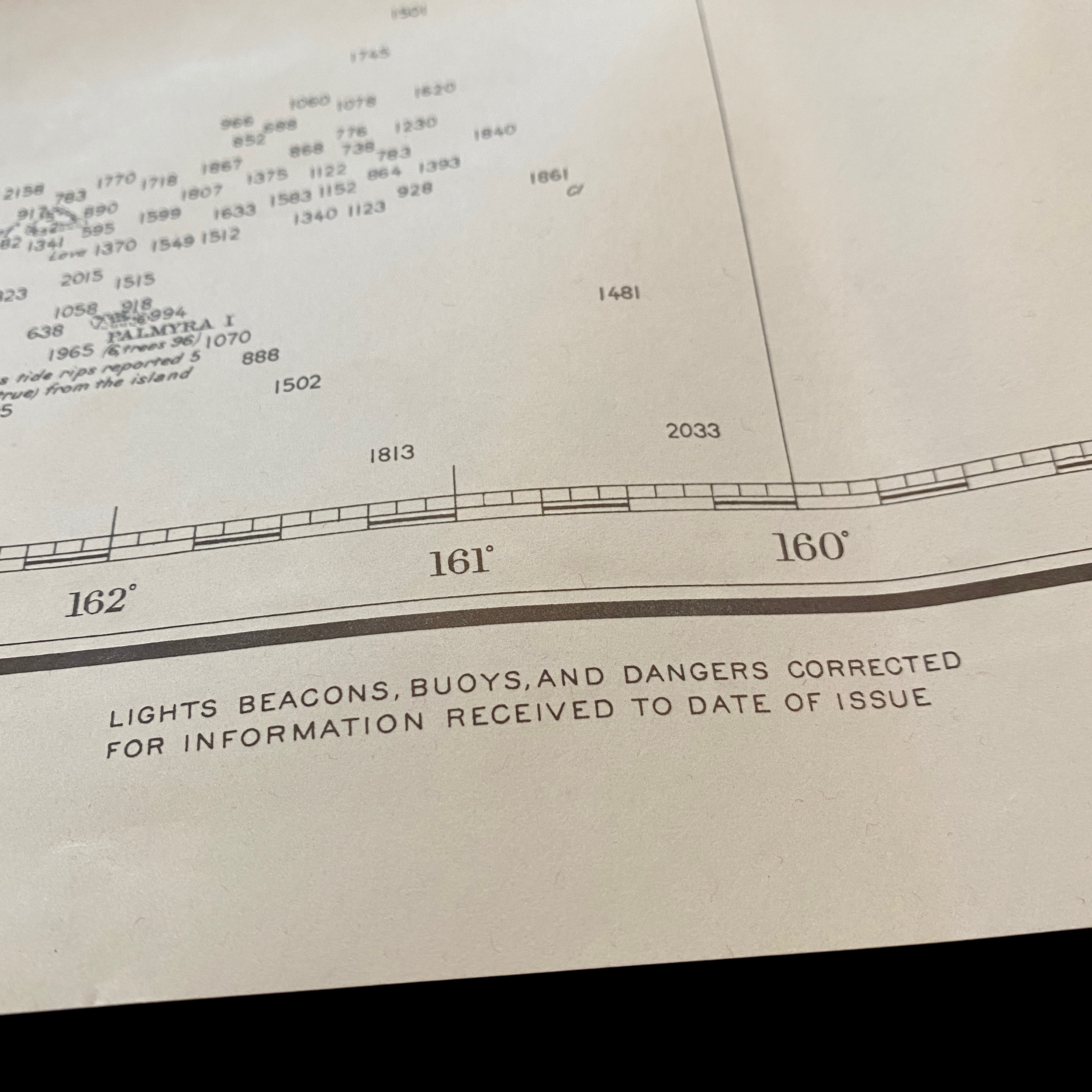
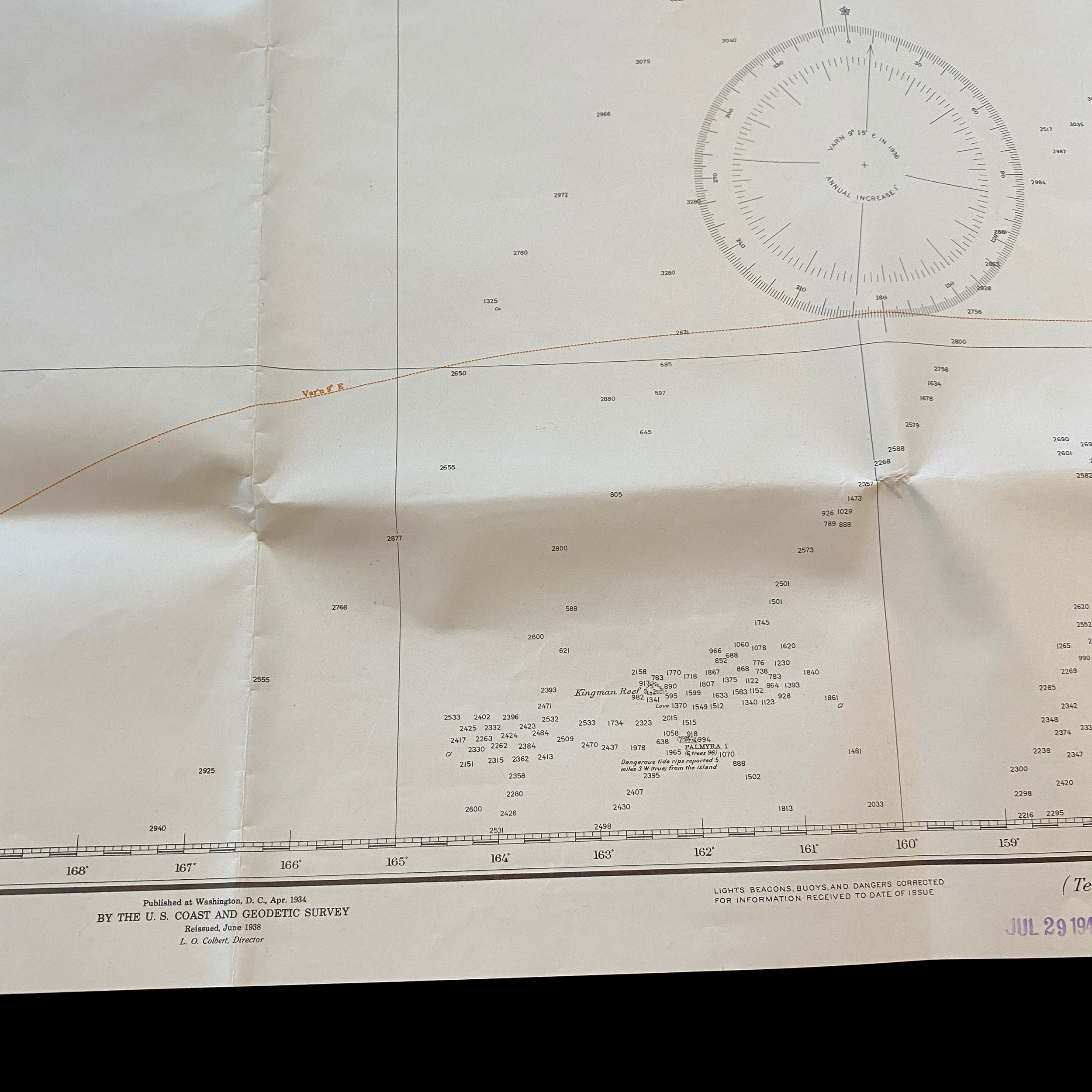




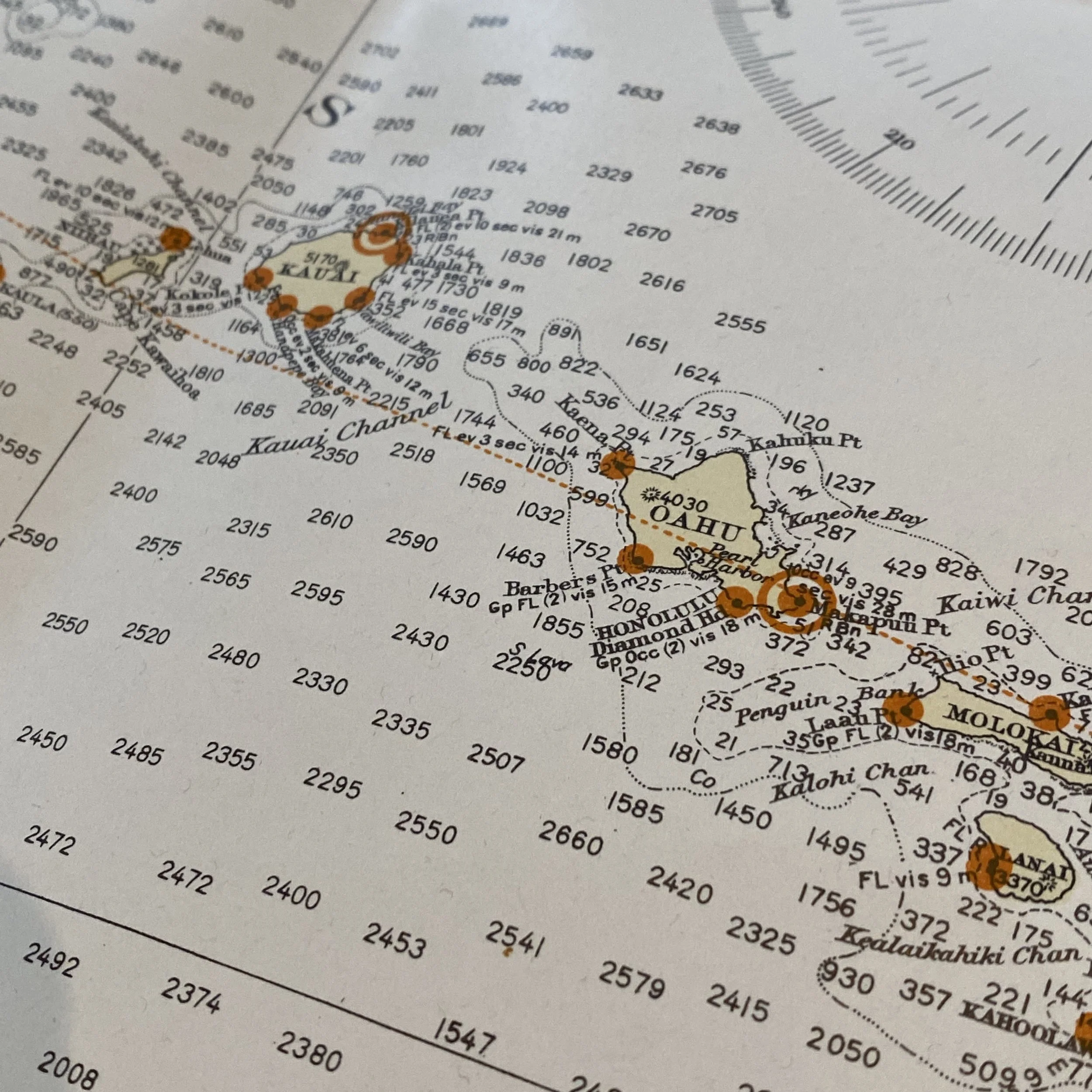
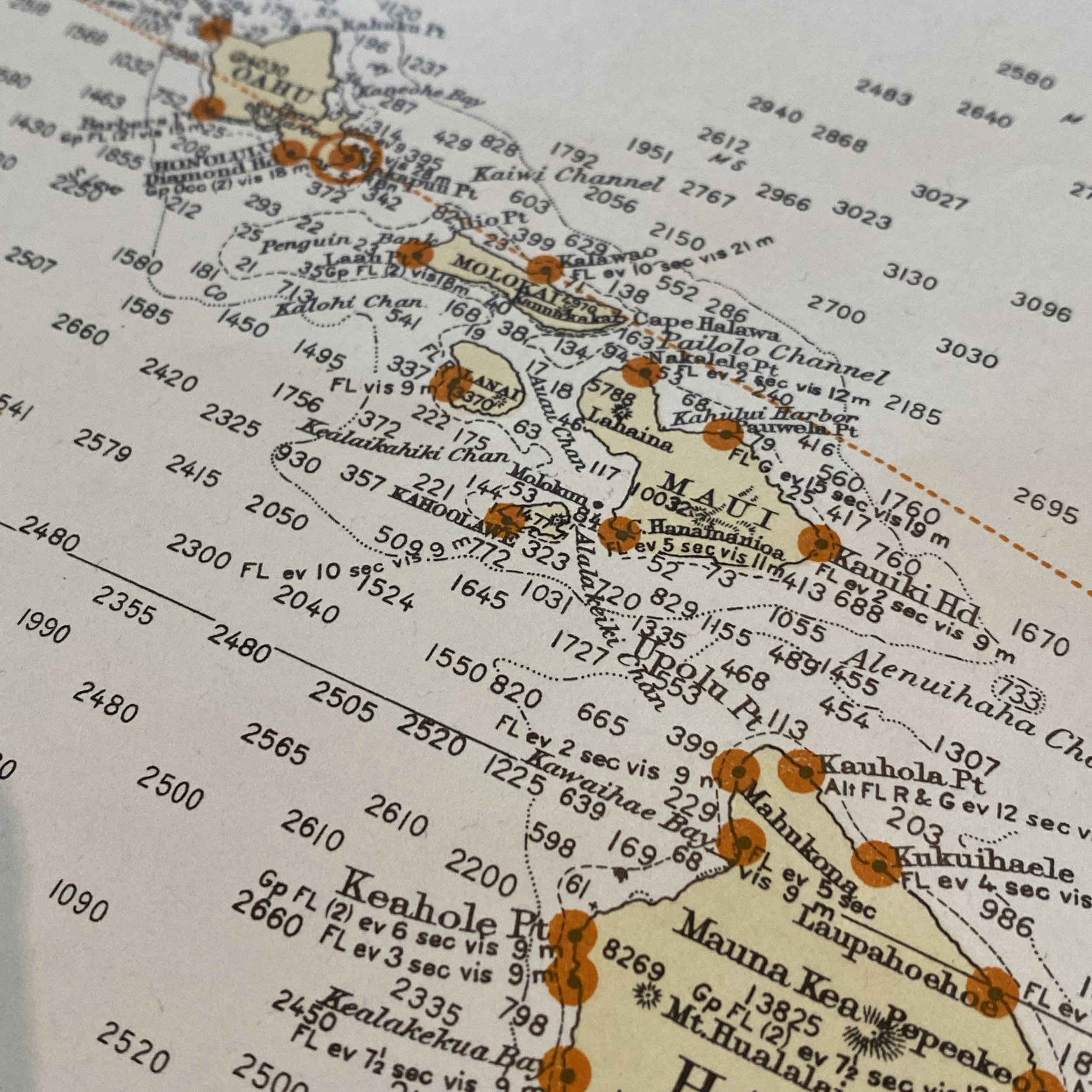




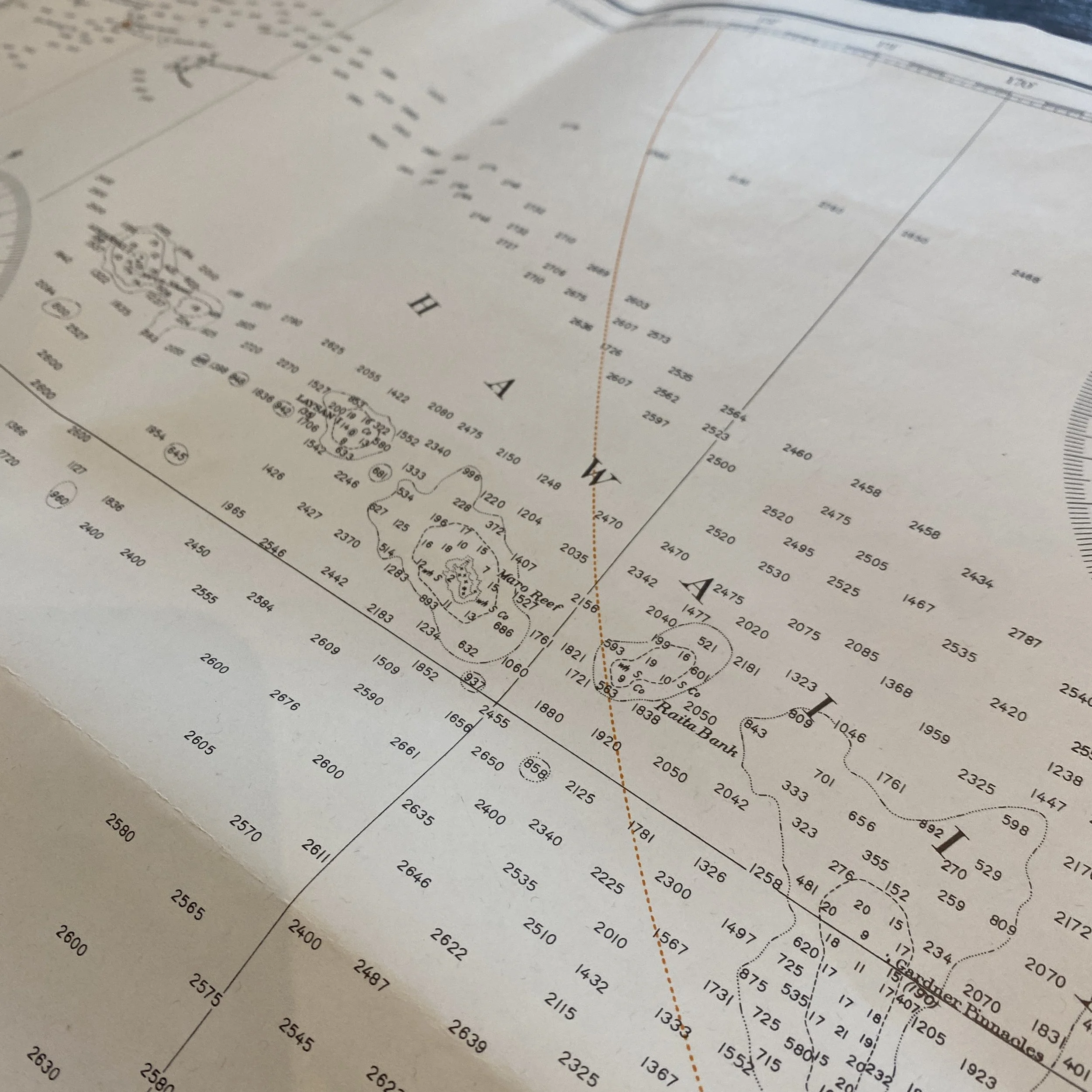
Original WWII 1940 Pearl Harbor Territory of Hawaii Fathom Depths Navigation Map
Comes with C.O.A.
This incredible and museum-grade 1940 dated “Territory of Hawaii” fathoms navigations map shows the surrounding ocean depths of the Hawaii regions and the infamous Pearl Harbor. This map was used for boat navigation and was present in Hawaii during the attack on Pearl Harbor the following year in 1941.
By May 1940, when the main part of the United States Fleet was transferred there from the west coast, Pearl Harbor had long been under development as a major naval base. Its Navy Yard had a dry dock capable of holding the largest warships, a marine railway for smaller ones, and an industrial plant for repairing and maintaining these ships. There were abundant mooring and docking locations for ships, including a berthing area along the eastern side of Ford Island that was commonly called "Battleship Row". Ford Island, dominating the center of Pearl Harbor, held a Naval Air Station for combat landplanes and patrol seaplanes. Across Southeast Loch from the Navy Yard was a submarine base and nearby was a large "farm" of fuel oil tanks. The base also included a Naval Hospital and other facilities.
This was still not nearly enough to support the Fleet. Pearl Harbor's area was limited, preventing the dispersal of its warships, and its opening to the sea was but a single narrow channel. Both of these elements were clearly dangerous from a security perspective. The base's supply and industrial capacity was too small to meet the Fleet's needs, and transportation from the west coast was slow and of insufficient carrying capacity. There were not enough tugs and other services to keep the Fleet operational and in good fighting practice. Housing and recreational facilities for the Fleet's thousands of Sailors and Marines were grossly inadequate for men who were to be long separated from their families. Nearby Honolulu was oversaturated with Navy and Army personnel, and its citizens, none-too-happy about the influx, did not welcome the new arrivals. Accordingly, Fleet readiness was handicapped, its security was well below optimum levels, and its morale was impared.
During 1940-41, construction of new facilities was undertaken to address some of these problems. The supply depot, on a peninsula across the channel from "Battleship Row", was greatly expanded, other locations were developed for basing aircraft, new permanent drydocks were begun, a floating drydock was brought over from the mainland, and many other improvements were prepared or started. The Army and Army Air Corps, responsible for the defense of Hawaii and the Pearl Harbor base, also built new facilities and brought in more forces. However, other deficiencies were either inherent to the physical location or simply could not be corrected within the limits of time, competing requirements and available resources. These had to be borne as best they could.